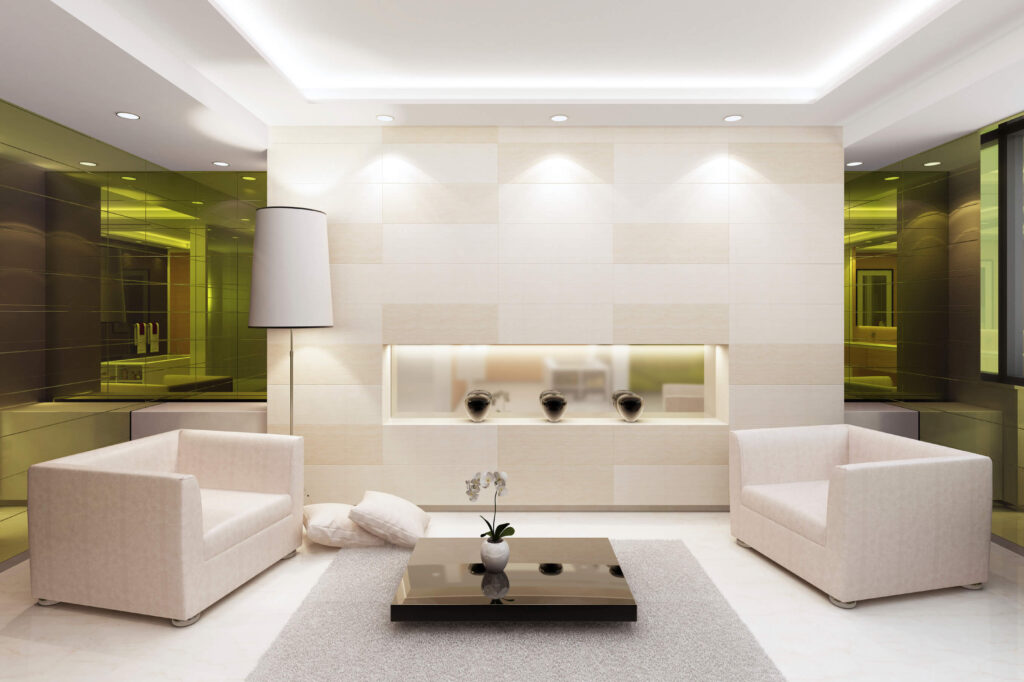Illuminating Your Living Space: The Ultimate Guide to Living Room Lighting
Your living room is the heart of your home, the space where memories are made, laughter echoes, and relaxation reigns. But even the most beautifully designed living room can fall flat without the right lighting. Choosing the perfect lighting scheme isn’t just about flicking a switch; it’s about crafting an ambiance, highlighting architectural features, and setting the mood for any occasion. This comprehensive guide will delve into the world of living room lighting, helping you transform your space from ordinary to extraordinary.
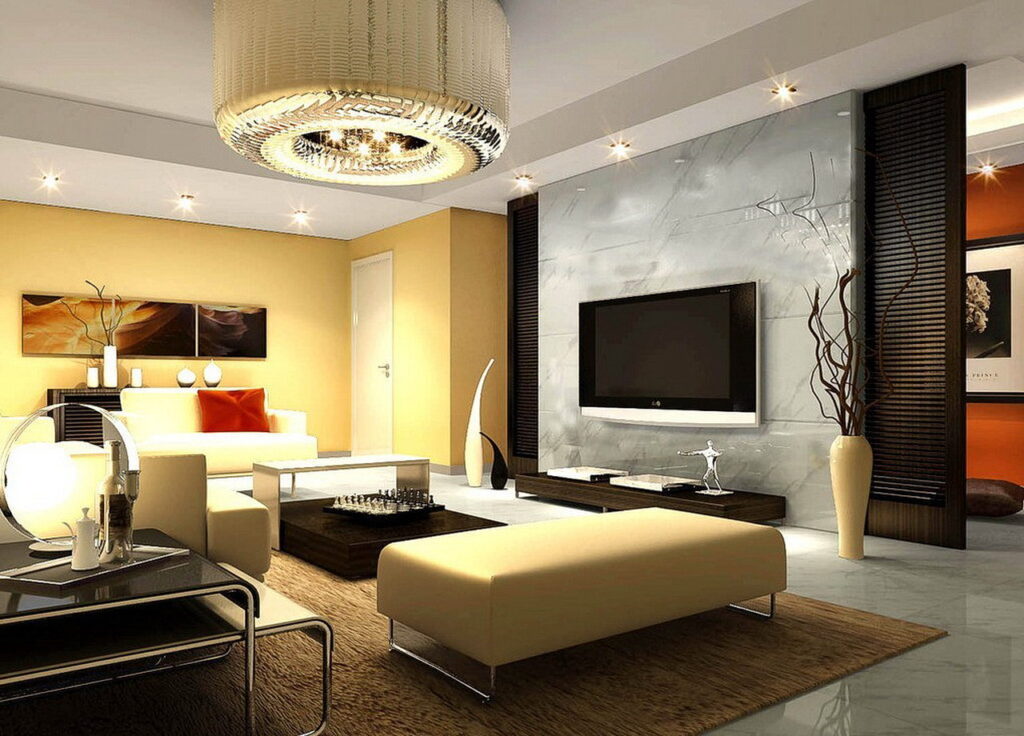
Understanding the Layers of Living Room Lighting
Effective living room lighting isn’t about a single, glaring overhead light. Instead, it’s about layering different light sources to create depth, warmth, and functionality. Think of it as a three-act play: ambient, task, and accent lighting.

1. Ambient Lighting: Setting the Stage
Ambient lighting provides the overall illumination for your room. It’s the foundational layer, setting the general tone and brightness. Think of it as the soft glow that washes over the entire space. Common sources of ambient lighting include:
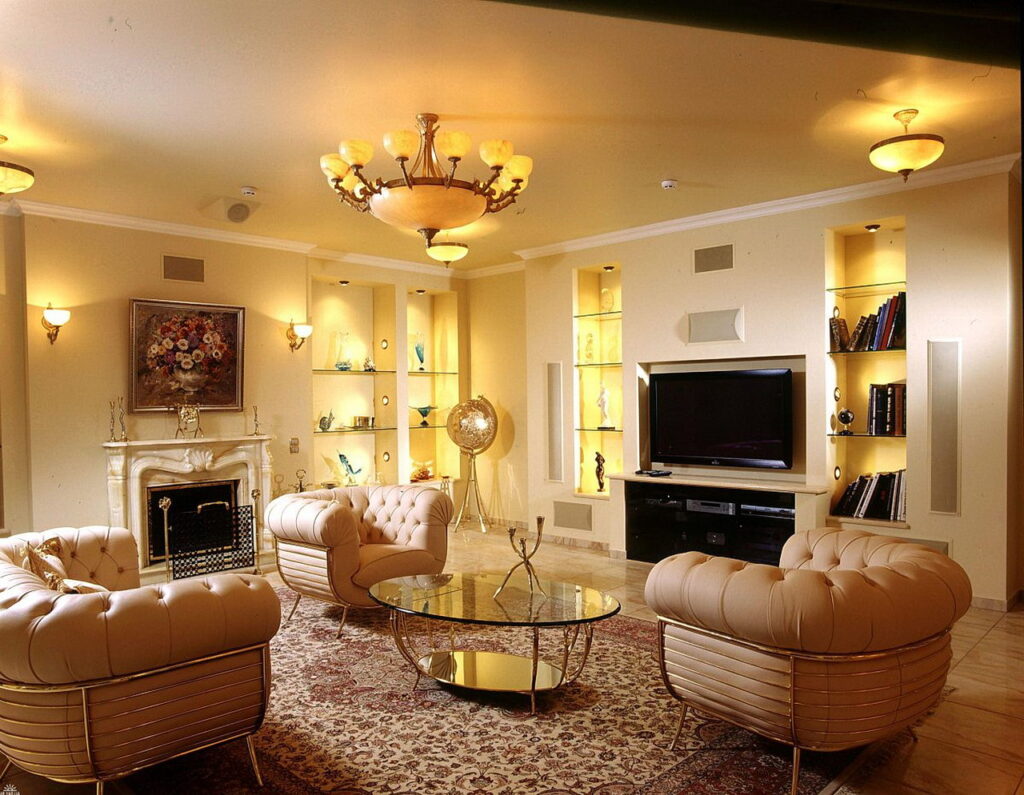
- Recessed lighting: Clean and discreet, recessed lights provide even illumination throughout the room.
- Chandeliers: A dramatic statement piece, chandeliers can be both functional and visually stunning, particularly in formal living rooms.
- Ceiling fixtures: From sleek modern designs to classic drum shades, ceiling fixtures offer a versatile option for ambient lighting.
- Track lighting: Ideal for larger rooms, track lighting allows you to direct light where it’s needed most.
When choosing your ambient lighting, consider the size of your room and the desired level of brightness. A smaller living room might benefit from a single, elegant fixture, while a larger space may require multiple sources or a more expansive design like a track system.
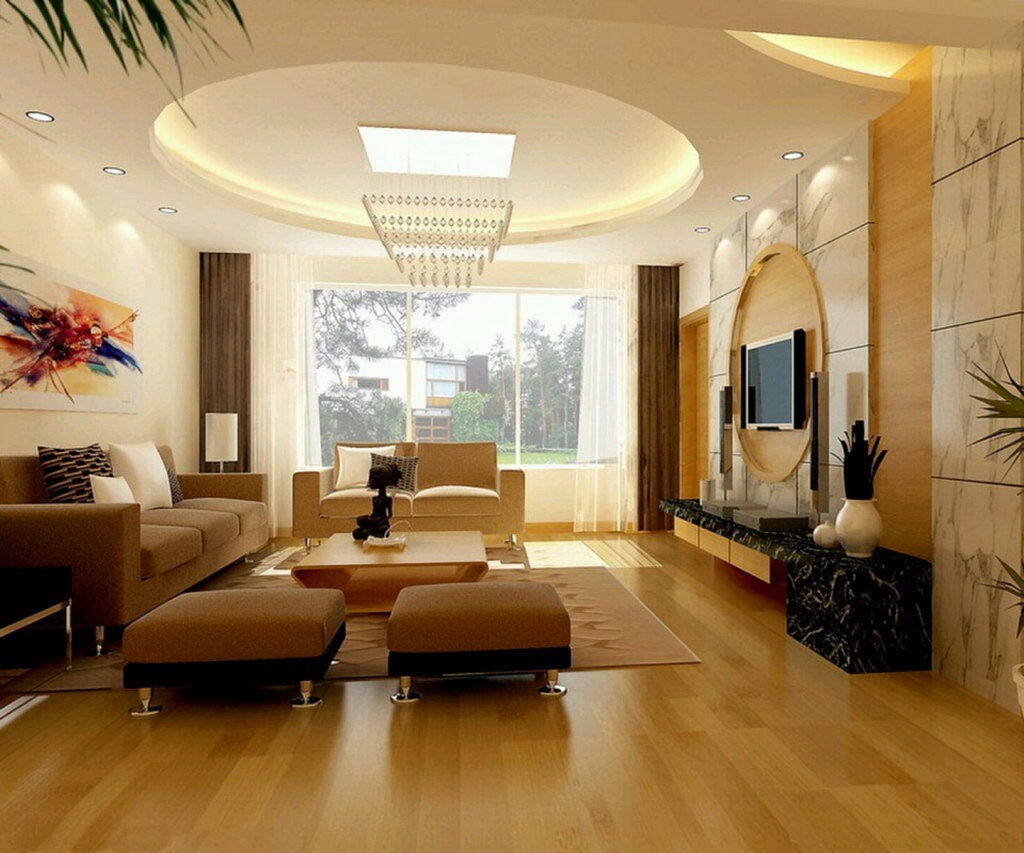
2. Task Lighting: Illumination for Specific Activities
Task lighting provides focused illumination for specific activities, such as reading, working, or playing games. This type of lighting should be bright and directed, minimizing eye strain and ensuring clear visibility. Examples of task lighting include:
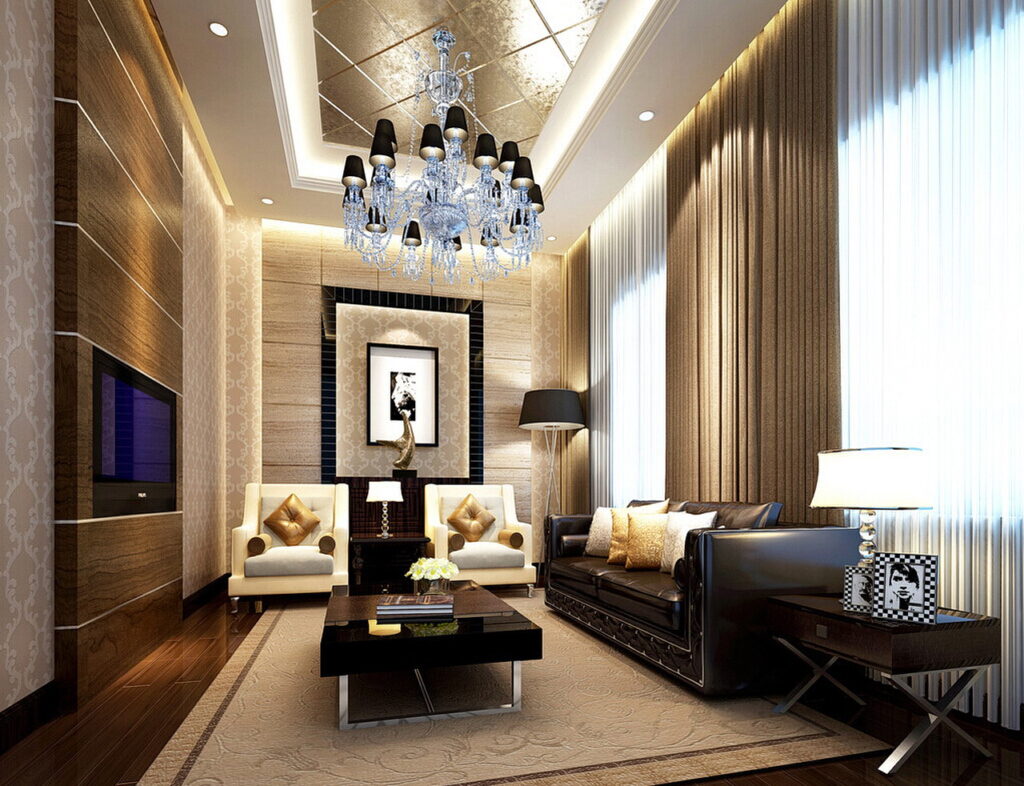
- Floor lamps: Versatile and stylish, floor lamps can be positioned to illuminate reading nooks or seating areas.
- Desk lamps: Essential for home offices or study areas within the living room.
- Table lamps: Perfect for illuminating side tables and creating a cozy atmosphere.
- Pendant lights: Strategically placed pendant lights can illuminate kitchen islands or dining areas within an open-plan living space.
Remember to position task lighting strategically to avoid glare and ensure comfortable visibility. Consider the height and placement of your furniture to determine the best location for your task lighting fixtures.
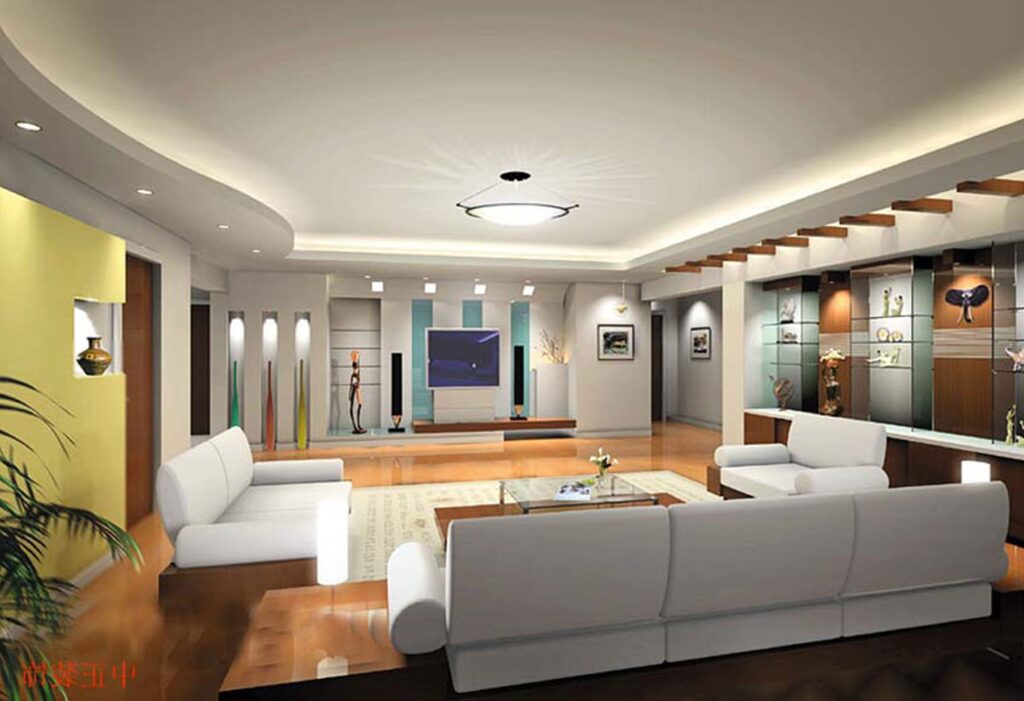
3. Accent Lighting: Showcasing Your Style
Accent lighting is all about highlighting specific features and adding personality to your living room. This is where you can truly let your style shine through. Accent lighting can be used to:
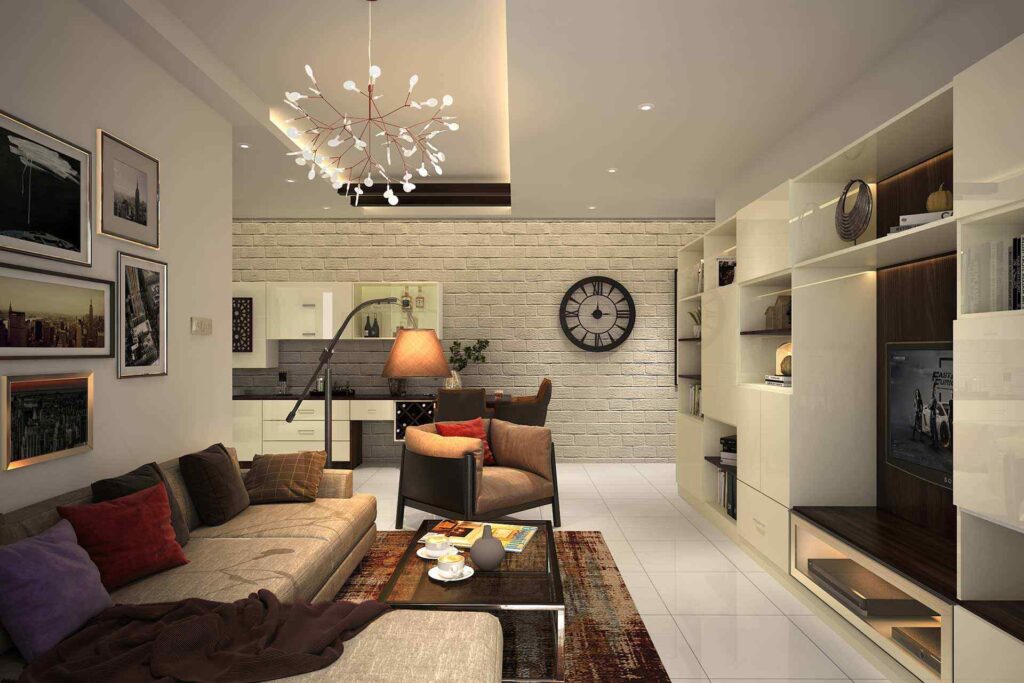
- Showcase artwork: Picture lights strategically positioned above artwork draw attention to your favorite pieces.
- Highlight architectural details: Use uplights or spotlights to accentuate crown molding, fireplaces, or built-in shelves.
- Create mood and ambiance: String lights, fairy lights, or candles can add a touch of whimsy and warmth to the space.
- Enhance textures and materials: Strategic lighting can highlight the unique textures of your furniture, rugs, or fabrics.
Accent lighting is all about creativity. Experiment with different types of lighting to see what works best in your space and enhances your personal aesthetic.
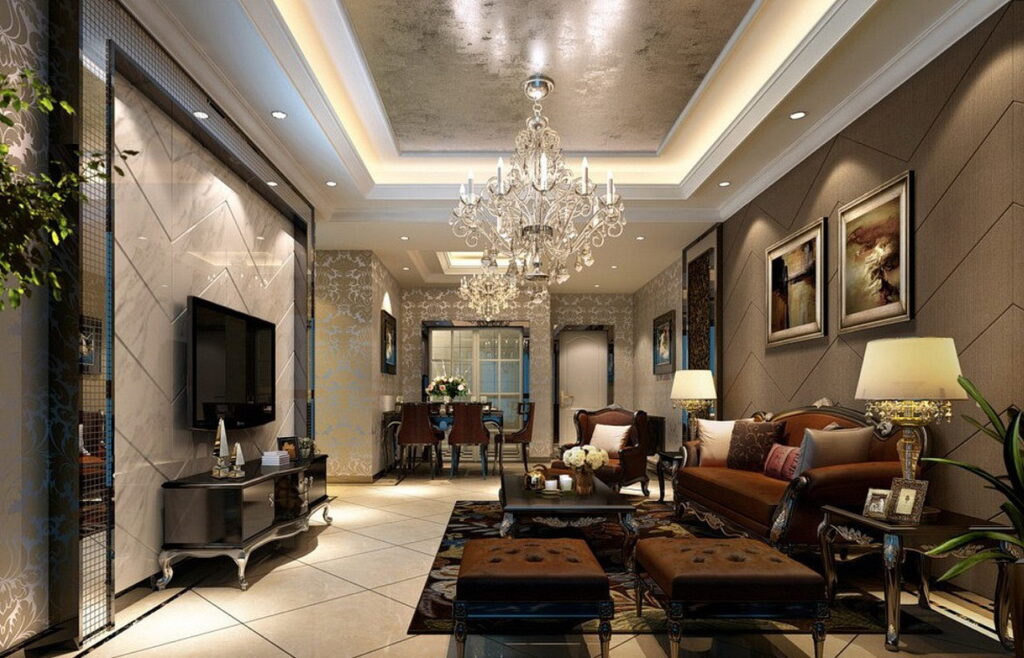
Choosing the Right Bulbs: Brightness and Color Temperature
Once you’ve decided on the types of lighting you need, the next crucial step is choosing the right light bulbs. Two key factors to consider are brightness and color temperature.
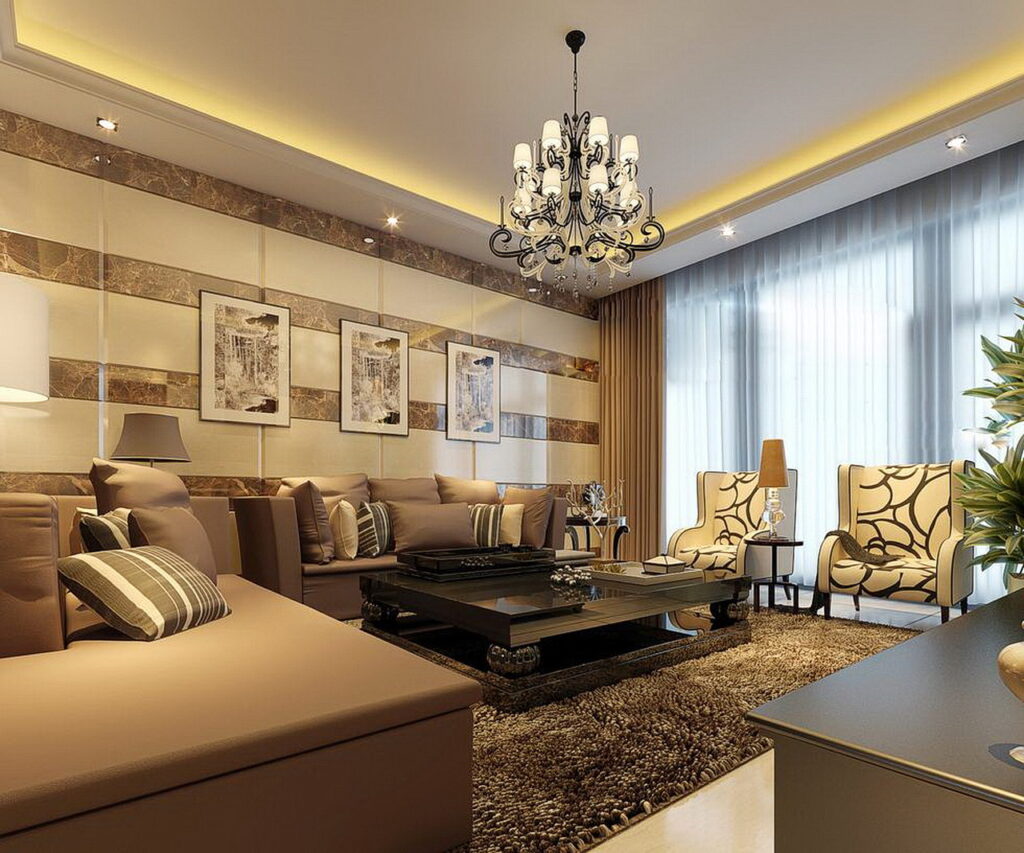
Brightness (Lumens):
Brightness is measured in lumens. The higher the lumen rating, the brighter the light. Consider the size of your room and the desired level of illumination when selecting lumens. A larger room will typically require bulbs with higher lumen ratings.
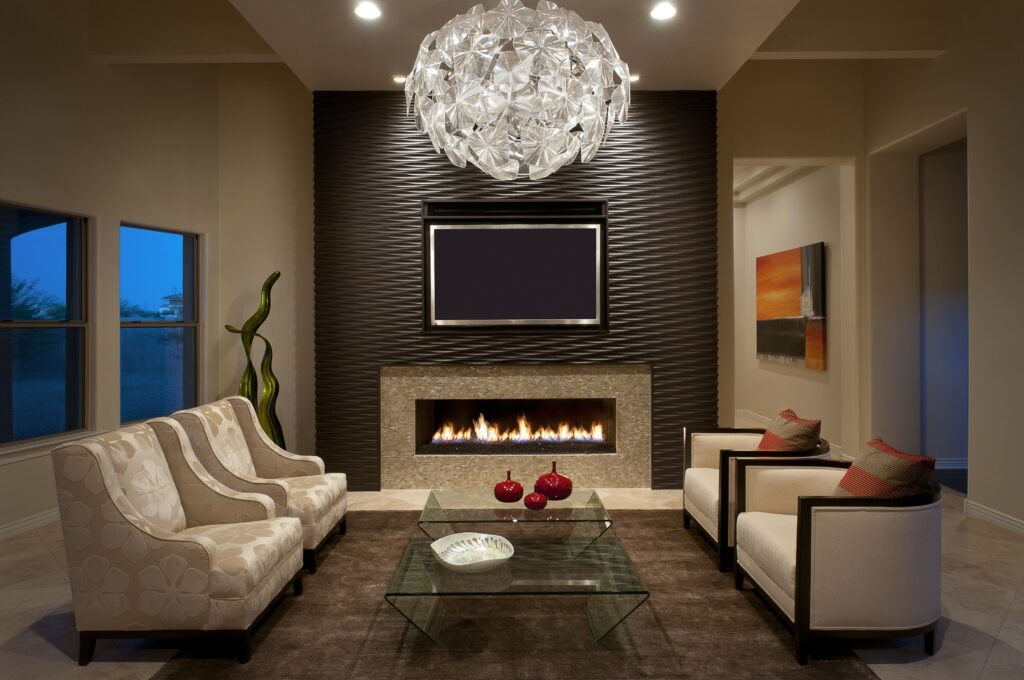
Color Temperature (Kelvin):
Color temperature is measured in Kelvin (K) and affects the overall feel of your lighting. Lower Kelvin values produce warmer, more yellowish light, while higher Kelvin values produce cooler, bluer light.
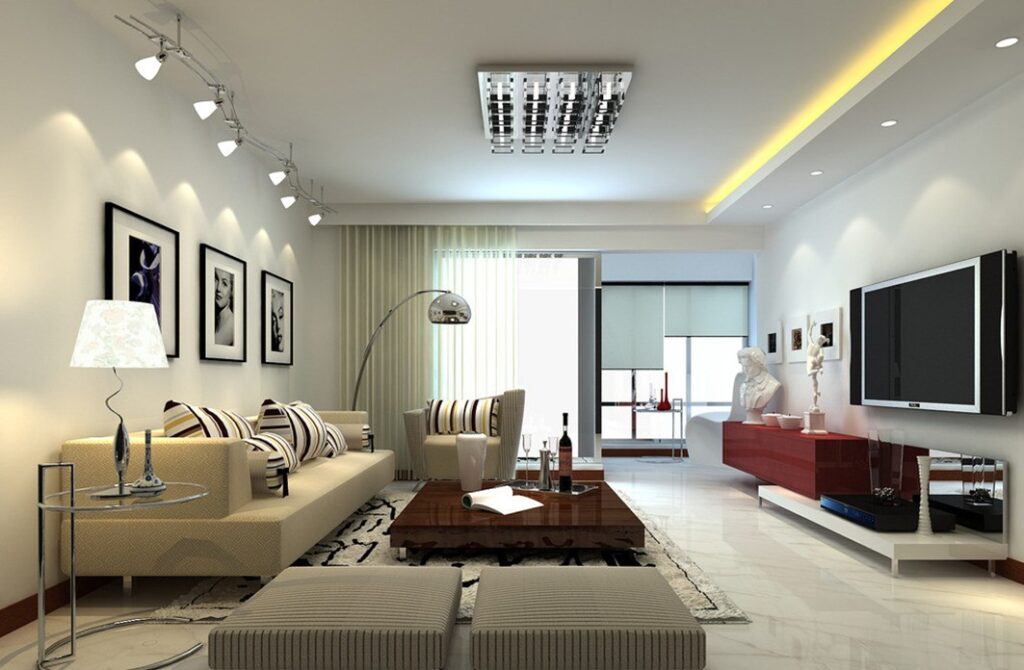
- Warm White (2700-3000K): Creates a cozy, inviting atmosphere. Ideal for living rooms, bedrooms, and dining areas.
- Soft White (3000-4000K): A versatile option suitable for most rooms, providing a balance between warm and cool tones.
- Cool White (4000-6500K): Produces a bright, crisp light, often preferred for kitchens, bathrooms, and workspaces. Generally less suitable for a relaxing living room atmosphere unless used strategically for task lighting.
Experiment with different color temperatures to find the perfect ambiance for your living room. Consider the overall style of your décor and the mood you want to create.
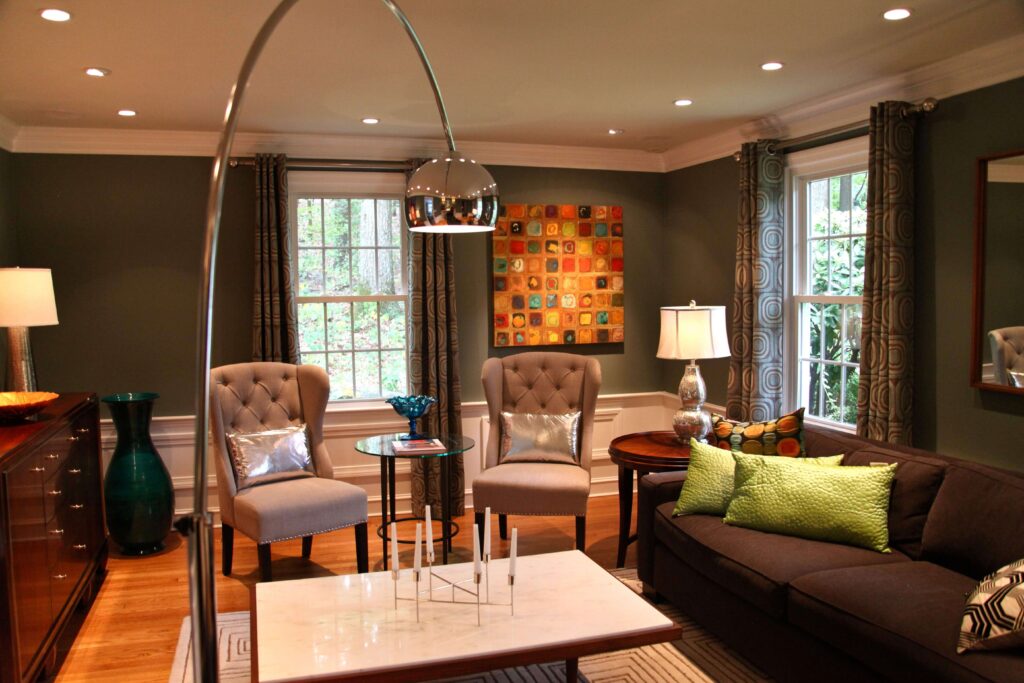
Smart Lighting: Taking Control of Your Living Room Ambiance
In today’s technological landscape, smart lighting offers a level of control and customization that was previously unimaginable. Smart bulbs, switches, and systems allow you to adjust brightness, color temperature, and even schedule lighting changes remotely via smartphone apps or voice assistants. This adds another layer of convenience and personalization to your living room lighting.
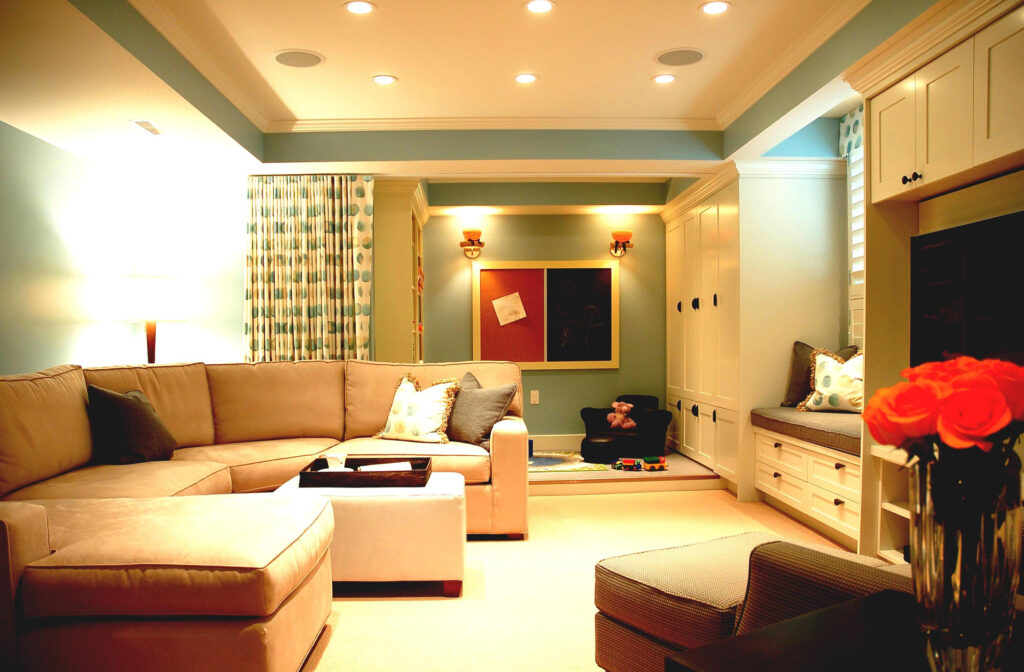
The benefits of smart lighting include:
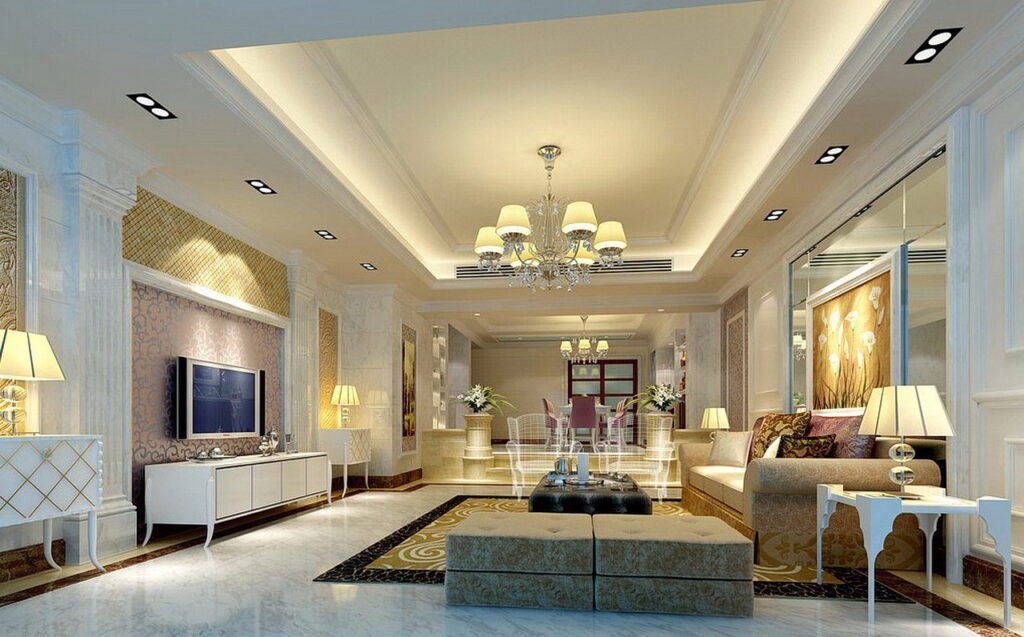
- Remote control: Adjust your lighting from anywhere in the world.
- Scheduling: Automate lighting changes to suit your daily routine.
- Customization: Create personalized lighting scenes for different moods and occasions.
- Energy efficiency: Smart lighting systems can help you save energy by automatically turning off lights when not in use.
Smart lighting is a fantastic way to upgrade your living room lighting and bring it into the 21st century, offering unmatched convenience and aesthetic control.
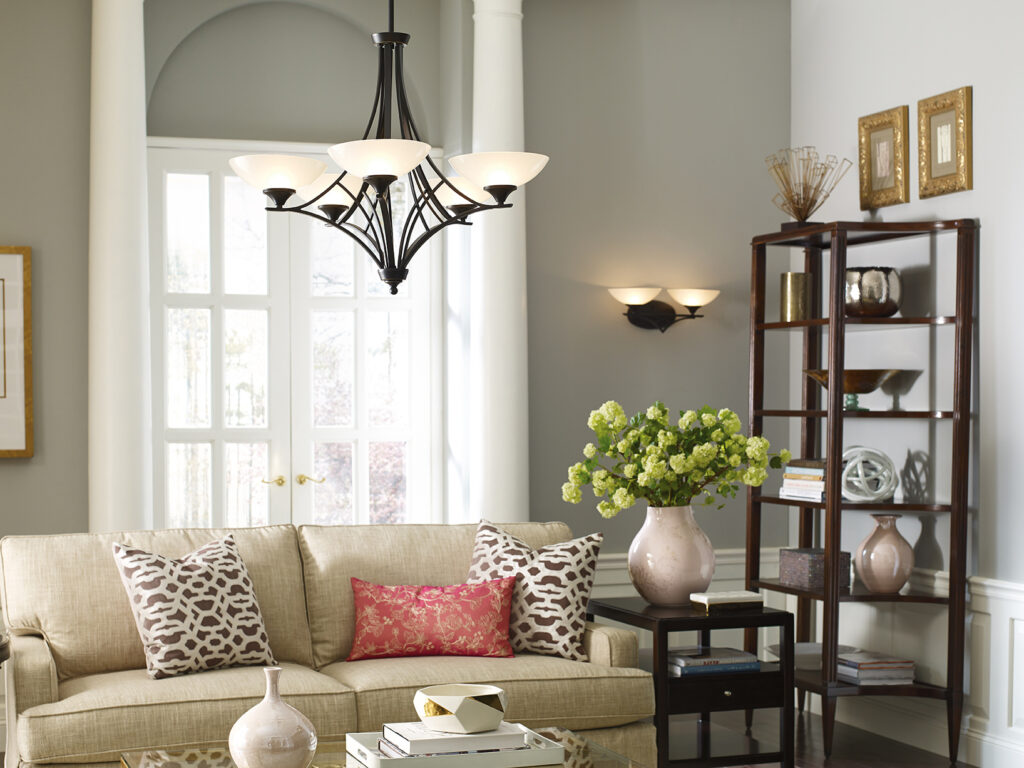
Conclusion: Crafting the Perfect Living Room Lighting Scheme
Designing the perfect living room lighting scheme involves careful consideration of various factors – from the overall style and size of your room to your personal preferences and desired ambiance. By layering ambient, task, and accent lighting, and carefully selecting the appropriate bulbs and fixtures, you can transform your living room into a haven of warmth, comfort, and style. Remember that the best lighting scheme is one that reflects your personal style and enhances the overall functionality and beauty of your living space. Don’t be afraid to experiment and find what truly illuminates your home!
